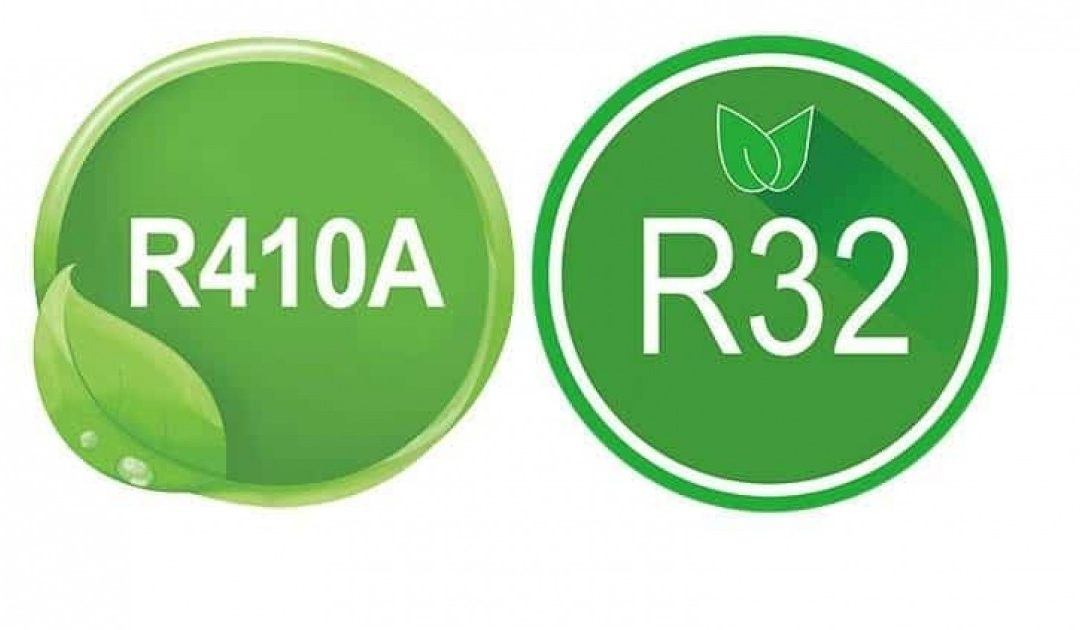Flammability:
One of the main distinctions between R410A and R32 is flammability. Since R410A is an A1 refrigerant, it won’t catch fire under typical working circumstances. Because of this, it is inherently safer because there is no chance of fire, even in the presence of high temperatures or sources of ignition. Because of this feature, R410A is a common option in settings like hospitals and heavily crowded buildings where fire safety is crucial.
R32, on the other hand, is categorised as a mildly flammable A2L refrigerant. Despite the low likelihood of igniting, it cannot be completely disregarded. R32 can only ignite under certain circumstances, such as a small area and an ignition source. Its flammability makes it less safe than R410A in terms of fire threats, even though safety procedures and correct installation can reduce these risks.
The Toxicity:
According to the ASHRAE classification system, R410A and R32 are both categorised as low-toxicity refrigerants. They don’t present any serious health risks under typical operating conditions. Their safety profiles do differ somewhat, though, in the case of a leak.
Small amounts of R410A are usually regarded as safe, but in confined places, it can displace oxygen, which might result in asphyxiation if concentrations rise too high. Similar to this, R32 can also displace oxygen; however, when exposed to flames, it can also release harmful byproducts like hydrogen fluoride (HF). Even though these circumstances are uncommon, they could make R32 more dangerous than R410A in severe circumstances.
Effects on the Environment:
As concerns about climate change and global warming grow, so does the importance of refrigerant environmental safety. Despite being non-flammable and low in toxicity, R410A has a big effect on the environment. It significantly contributes to global warming, with a 2088 Global Warming Potential (GWP). R410A has a high GWP, which renders it unsustainable over the long run, even though it does not destroy the ozone layer (ODP = 0).
In contrast, R32 is a more environmentally responsible choice because of its significantly lower GWP of 675. Although it has the same ODP of zero as R410A, it is a safer choice for the environment due to its lower impact on global warming. R32 is more in line with international rules that promote more environmentally friendly refrigerants. This makes it a more sustainable solution, although with slightly more dangers in terms of handling and ignition.
Operating Pressure:
Refrigerants work at specified pressures, which might affect the safety and lifetime of the air conditioning system. Compared to R32 and many other refrigerants, R410A functions at higher pressures. Compressors and pipes may be subjected to more stress as a result. This additional strain may eventually increase the chance of component failure or leaks, jeopardising safety.
Compared to R410A, R32 functions at a little lower pressure. This lessens the mechanical strain on system parts, decreasing the likelihood of leaks or malfunctions. R32 is a little safer in this situation because it puts less strain on the system due to its lower pressure, which lowers the possibility of unexpected malfunctions or accidents.
Management of Leaks:
Any air conditioning system may experience refrigerant leaks, and the type of refrigerant utilised will determine the safety consequences. Since R410A is a non-flammable refrigerant, leaks are typically less dangerous. However, because of its high GWP, a leak might result in inefficiency and damage the environment, just like with any other refrigerant.
However, due to its flammability, R32 leaks need greater monitoring. A leak in a closed area can raise the chance of ignition if it comes into contact with an ignition source, even if R32 has a low flammability rating. To guarantee early identification and reduce hazards, R32 systems are frequently outfitted with leak detection sensors. Although these precautions increase safety, they also make utilising R32 more complicated and expensive.
Adherence to Regulations:
Regulations around the world are progressively replacing high GWP refrigerants with greener substitutes. R410A, with a significant GWP of 2088, is being replaced in several places. Its continuous use may lead to regulatory concerns and increased expenses for producers and consumers in the future.
R32, with its much lower GWP, complies with present and prospective environmental laws. From a regulatory standpoint, this makes it a safer option. Adoption promotes environmental sustainability and keeps producers and consumers ahead of evolving regulations.
Final Thoughts:
The particular situation in which R410A and R32 are used determines how safe they are. In settings where fire safety is a primary concern, R410A is the safer option because it is non-flammable and simpler to handle. Its well-established usage and awareness among technicians significantly increase its safety profile.
With a significantly lower GWP, R32 is a more ecologically friendly choice. Although there are some risks associated with its mild flammability, these can be effectively managed with the right training and safety precautions. In the long term, R32 is a more sustainable and future-proof refrigerant since it better satisfies international environmental standards.
Frequently Asked Questions:
1. Is It Possible To Stop Refrigerant Leaks?
The best defence against leaks is routine maintenance. This involves examining the coils, connectors, and lines of refrigerant for wear and tear. Leaks are also less likely when high-quality components are used and installation is done correctly.
2. What Kind Of Refrigerant Is Utilised In Automobile Air Conditioners?
R-134a or R-1234yf refrigerants are commonly used in modern automobile air conditioning systems. Because of its decreased GWP and compliance with environmental rules, R-1234yf is becoming more and more popular. R-12 has been phased out, but older cars may still use it.


